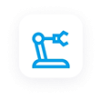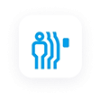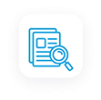Sensing technology has made a profound impact on the development of various emerging industries. The adoption of Industry 4.0, in particular, has accelerated the surge in demand for advanced sensing solutions. The global sensor market has projected tremendous growth in the last few years, and it is expected to reach USD 55.86 billion this year.
Currently, a wide range of smart sensing solutions are available out there, geared with robust functionalities that can enhance productivity immensely. For optimal performance, however, proper installation is a must. Any negligence may result in severe safety or operational hazards.
Here’s a comprehensive guide discussing proper sensor installation steps.
Position for Performance
The mounting location of the sensor has a great impact on sensor performance. The sensor must be securely placed in a stable mounting position without any obstructions within its field of data collection. Also, some sensors have to be set at different orientations or angles for proper results. For example, light sensors should be positioned to access light sources for optimal performance.
Similarly, while a multi-echo feature laser sensor would bypass translucent obstruction in object detection, a laser sensor ideally functions best within an unobstructed line of sight. So, when installing a sensor, pay special attention to mounting positions, clear line of sight, leveling, and tilt adjustments. It is crucial to refer to the installation guides or any other essential document regarding the sensor placement to get accurate results.
Stable Power Supply
All sensors have different power requirements and should be connected to stable power sources with the recommended voltage settings. Any sudden spike or fluctuation may affect the device adversely. Therefore, it is also important to check the reliability of the power sources and data cable connections when installing sensors.
UPS (Uninterrupted Power Supply) systems can be used for additional stability. So, when deciding on the power connection, make sure to check the manufacturer’s guidelines in detail for better performance and longevity.
External Protection
Sensor devices should be adequately protected to prevent damage and maintain the required level of functionality. Sensor performance might be affected due to extreme temperature and pressure conditions, humidity, dust, harsh weather conditions, or light noise. They can influence the sensor’s reading, leading to inaccurate results.
While specific sensors are designed to operate in specific environments, such as indoor and outdoor LiDAR, additional protection is still required for better functionality and extended lifespan. Protective enclosures and casings help create a barrier between the sensor and the harmful elements in its surroundings. These precautions can help reduce erroneous results and increase the equipment’s lifespan.
Setting up the System
The next crucial step is to integrate the sensor into the control system. Sensors need an efficient communication setup as they function within a wider network. They have to share information and receive constant feedback to ensure the effective functioning of devices that work on real-time data, such as self-driving cars.
Any disruption can have substantial safety implications. Therefore, when installing sensors, make sure to use proper data transmission channels and interfaces. This is to enable efficient communication with other nodes in the system.
Modern-day sensing solutions use wireless communication protocols that help in real-time connectivity. But standard interface protocols also facilitate high-bandwidth connections like the Ethernet, RS422, RS-232C, and more.
Software tools also help integrate the sensors and monitor their performance conveniently. Ensure you understand the communication protocols per the manufacturer’s guidelines and configure them accordingly.
Accurate Calibration
Sensor calibration is a crucial step for accurate sensor readings. Sensing solutions are designed to be extremely sensitive to changes in their surroundings. Inaccurate calibration can result in undesired output values that ultimately affect the system's performance as a whole.
There are different types of calibration parameters depending on the type of sensor. These include temperature, pressure, and electrical and mechanical calibration for accuracy. Most manufacturers perform in-house calibration. In case any additional hardware is required to correct the sensor output, then it is recommended that the user systematically refer to manufacturer guidelines. There’s also system-level calibration with onboard digital circuitry and software that offers more flexibility.
Safety is Paramount
Prioritizing safety should absolutely be your primary concern when working with sensors. Potential risks can include shocks, exposure to harmful beams, burns, and other injuries. Simply wearing the right protective gear and following the proper process can significantly minimize the chances of any mishaps. Check the manufacturer's guidelines and safety standards for secure installations.
Hokuyo Sensors: Cutting-Edge Technology and Superior Service
Sensor installation should ideally be done as per the manufacturer’s instructions. Refer to the manuals and documents for proper installation procedures. To ensure optimal performance and accurate results, it is essential to choose high-quality products.
Hokuyo offers a wide range of smart sensing solutions developed by leveraging the latest technologies. We deliver tailored solutions best suited to your requirements and believe in maintaining unparalleled support and assistance standards for our clients.
Get in touch with our experts to clear all your doubts about sensor installation.

 Factory Automation
Factory Automation Logistics Automation
Logistics Automation Process Automation
Process Automation Crane Collision Avoidance
Crane Collision Avoidance LiDAR Sensors
LiDAR Sensors Safety Laser Scanners
Safety Laser Scanners Optical Data Transmission
Optical Data Transmission Hot Metal Detectors
Hot Metal Detectors Laser Distance Sensor
Laser Distance Sensor Blog
Blog Whitepapers
Whitepapers Case Studies
Case Studies Infographics
Infographics